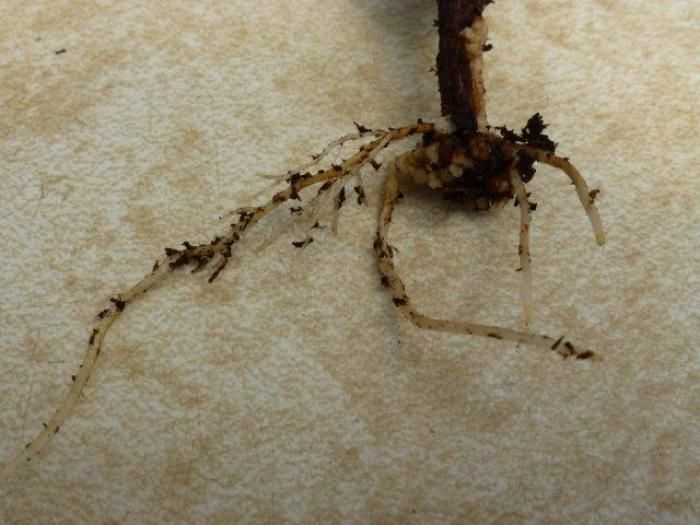
If you are fortunate enough to have a friend who grows herbs, you might want to try rooting some cuttings of perennial herbs, a quick and inexpensive way to obtain plants that are true to type. The best time to do this is in the spring when plants are putting out new growth.
Choose sturdy cuttings, three to four inches long, and remove the leaves from the lower half of the stem. If the stems are very woody-like rosemary or sage or winter savory-use a sharp knife to strike (gently yet firmly scrape off the woody cambium layer in one clean stroke) on just one side of the stem. My gardening friend, Kathleen Connole, who does most of the root cuttings at the Ozark Folk Center’s greenhouse, says that this stimulates the cells to go into another mode than producing leaf growth-and produce roots.
Fill small plastic pots with a medium like Promix ™ or combine half sterile potting mix (spaghnum) and half perlite. Dampen the mix thoroughly. Dip the leafless part of each stem in a rooting powder, such as Rootone™, shake off the excess, and place the stem in the moist medium. The Rootone is not absolutely necessary; it is a fungicide. Mist the cuttings.
Keep the cuttings in a warm place with filtered sun. Mist them several times a day, keeping the foliage damp. They should not be allowed to dry out. If the cuttings dry out and wither in the first two or three weeks, they will not root.
The cuttings should produce a healthy root system in six weeks or less. After this time the stems should show signs of new growth, and if tugged gently, their new roots should hold them in the soil. If all danger of frost is past, you can now transplant the herbs to new pots or into the garden.
Root cuttings can also be done in water. They need a little more attention in that the water should be changed daily, or at least every other day, and the roots rinsed. Some plants root better in water than others and some won’t root in water. Thick-stemmed plants often root better in water and mints and basil root quickly as water cuttings. Both Kathleen and I agree that water root cuttings are not as strong and are trickier to transplant into soil. However, Kathleen is very successful with rooting Confederate roses and artemisia in water.
Making root cuttings is very easy to do-it just takes time to allow the roots to form-and is very satisfying. It is a great way to propagate your own plants and to share with other gardeners.
Fine Gardening Recommended Products

Corona® Multi-Purpose Metal Mini Garden Shovel
Fine Gardening receives a commission for items purchased through links on this site, including Amazon Associates and other affiliate advertising programs.

ARS Telescoping Long Reach Pruner
Fine Gardening receives a commission for items purchased through links on this site, including Amazon Associates and other affiliate advertising programs.






























Comments
Log in or create an account to post a comment.
Sign up Log in